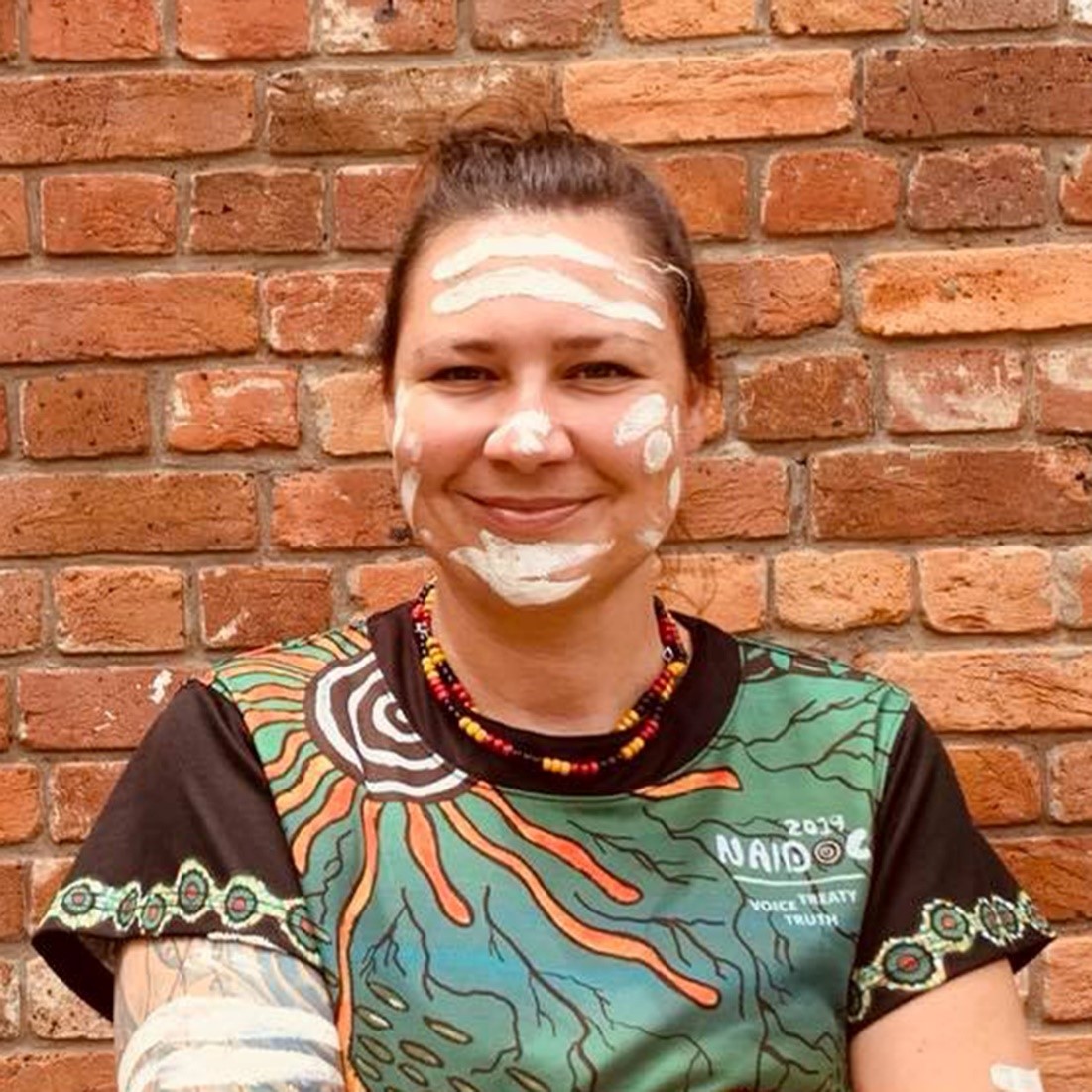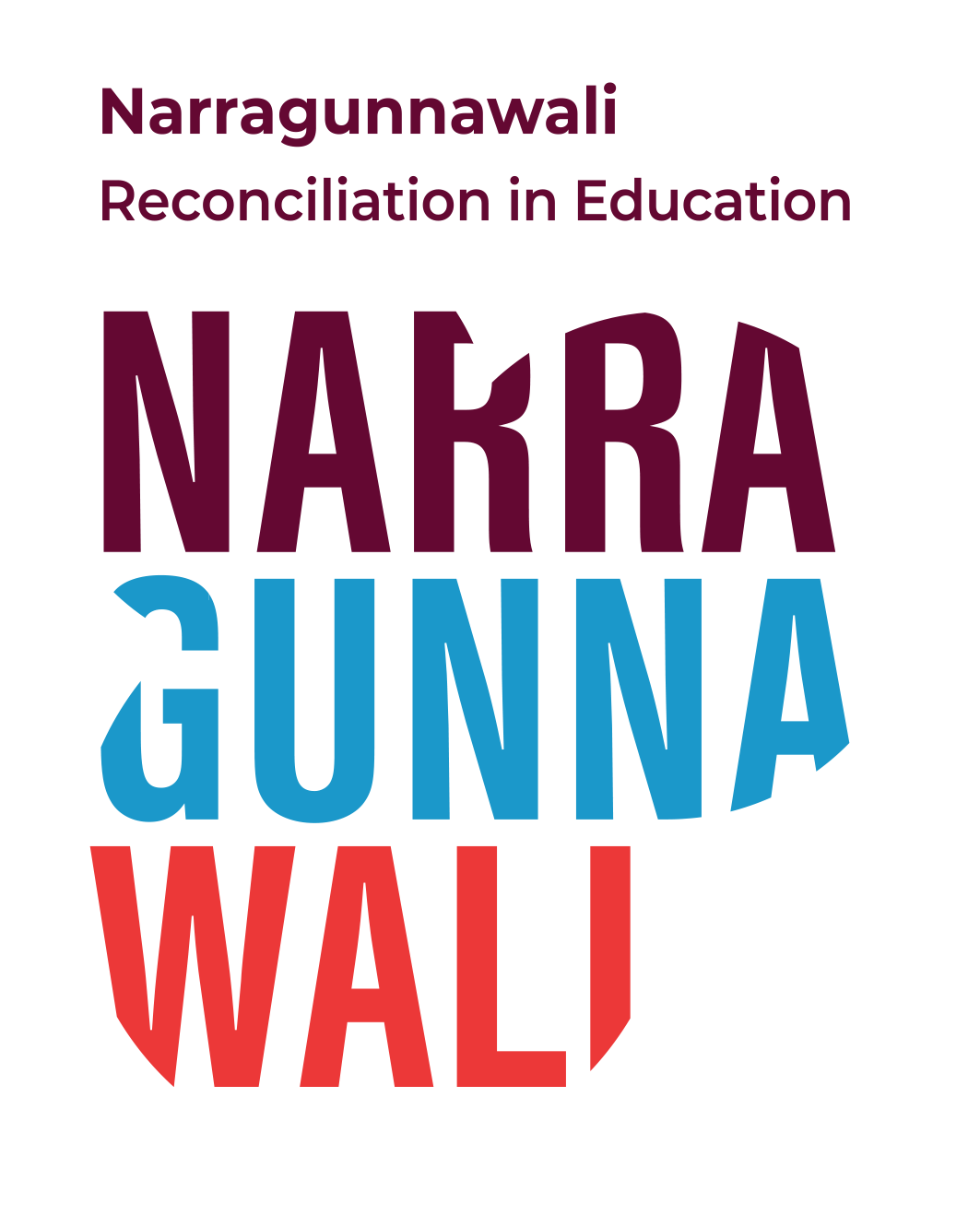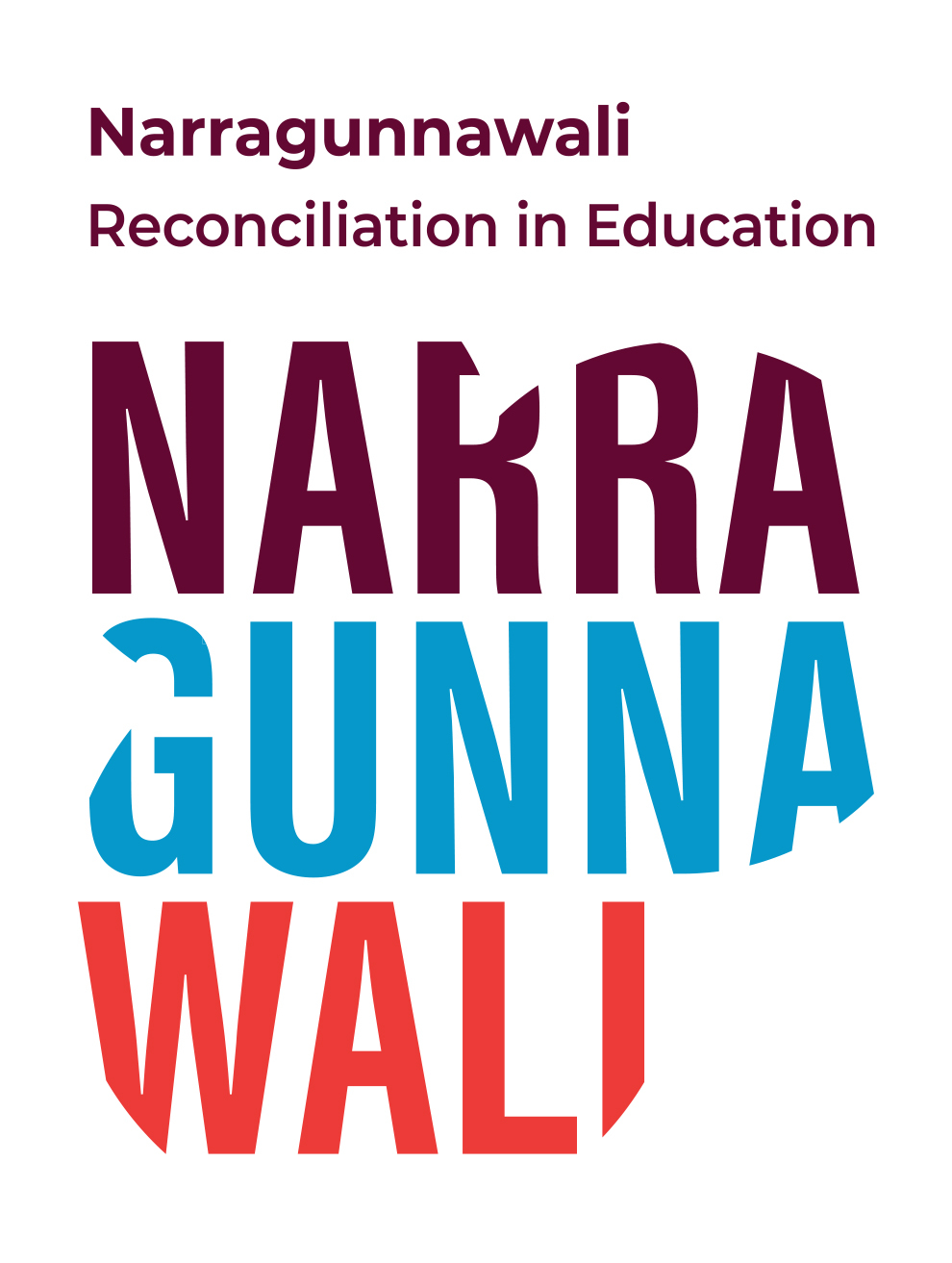Teacher Feature – Nina Ross

Nina Ross is a proud Aboriginal woman with connections to Anaiwan and Dunghutti lands while living and working on Wonnarua Country. She is a teacher and has 22 years’ experience in secondary schools. Nina has written professional teacher learning programs that embed Aboriginal and Torres Strait Islander perspectives to build cultural understanding. Since joining Reconciliation Australia’s Narragunnawali team, Nina leads the program’s Professional Learning and Curriculum strategy.
Could you start by telling us a little bit about yourself?
I am a proud Aboriginal woman, mother, daughter, wife, sister, and aunty with connections to Dunghutti and Anaiwan Nations. From my father I also have Anglo-Celtic Australian ancestry.
I live on Wonnarua Country, with five generations of women in my family growing up, living, and working on Wonnarua Land, so I feel deep connections to this area for what it has gifted me. I have two beautiful teenage children I’m very proud of and I enjoy watching them grow up, albeit too quickly!
I have been a High School Visual Arts teacher for 22 years. I completed my tertiary education on Awabakal Country with Fine Arts training at the Newcastle School of Art and degrees in Education and Fine Arts from the University of Newcastle as well as TAFE studies in Aboriginal and Torres Strait Islander Cultural Arts on Wonnarua Country.
I am also a contemporary artist, working predominantly in painting and weaving and have proudly exhibited collaborative weaving sculptures and a collaborative possum skin cloak with my Local Aboriginal Land Council and community. On the side I sometimes facilitate art and cultural art workshops when time permits.
Since joining Reconciliation Australia’s Narragunnawali team, I lead the program’s Professional Learning and Curriculum strategy.
What got you into working with Reconciliation Australia’s Narragunnawali program?
As a teacher, who is also Aboriginal, I have always embedded First Nations perspectives in my lessons; it’s natural for teachers to draw on their own life experiences and passions into their pedagogy. But I love seeing the fervour of teachers, especially non-Indigenous teachers, for reconciliation and teaching the true history of Australia.
I believe reconciliation is everybody’s business and I want to help educators access and use resources in their classrooms. The Narragunnawali platform is such a respected and expansive resource. Being a part of the Narragunnawali team means I am working with strong advocates, allies, and like-minded people. Narragunnawali is leading reconciliation in education, and I am so honoured to be included.
From your experience as a classroom teacher, what role do educators play in progressing reconciliation?
I have been an educator for a long time, mostly in the Catholic sector and I have seen a lot of change. My education in the 80’s and 90’s didn’t include Aboriginal and Torres Strait Islander perspectives.
Anything I wanted to know I had to go out and investigate myself. In those days it was encyclopedias, and our copy was printed in 1978, so you can only imagine what was written about First Nations people, cultures, and histories.
I think teachers have the future in their hands. They can direct change through their teaching and even have the chance to re-educate parents via their students. I can’t count how many parents have told me they have learned from their children’s education, saying “I wish we were taught this at school”, with many feeling cheated for their lack of knowledge of the true history of Australia.
Teachers’ knowledge of content, access to ethical and appropriate resources, and level of comfort and cultural responsiveness is key to Aboriginal Education and reconciliation today.
As an art teacher of decades, what role can art and its curriculum play in facilitating reconciliation?
I’m very biased, but art subjects are the bomb in terms of communication and wellbeing. It’s also lots of fun! Art is intrinsic to Aboriginal spirituality and has been a method of passing down stories and documenting history, well, forever.
Through creating and analysing art teachers can share the stories of Aboriginal and Torres Strait Islander artists and capture visual accounts of history. I love the historical drawings of Tommy McRae and the recontextualised work of Daniel Boyd. Students soak it up. I have been fortunate to have the opportunity to write HSC educational resources for the New South Wales Education Standards Authority and a lot of First Nations content landed.
I have also written professional teacher learning programs that embed Aboriginal and Torres Strait Islander perspectives to build cultural understanding which I have presented at conferences.
I encourage teachers to start or continue to build upon their cultural responsiveness. Our culture is rich, and we are at a time where students have access to so much content from around the globe and they are ready and willing to listen and stand up for the truth. I’m excited and hopeful and certain the arts will help build reconciliation in all school contexts.
What does reconciliation mean to you?
Reconciliation to me means there will be unity in Australia, and it does start with the young ones taking their knowledge back to their homes and having conversations with their parents and grandparents who grew up in different times. Reconciliation means unity between people – hopefully that my mum can witness but also that my children can experience. Unity in our knowledge and acceptance of history and unity with our aspirations to Close the Gap. Reconciliation means we will be uncomfortable at times. But you can’t grow in comfort.

